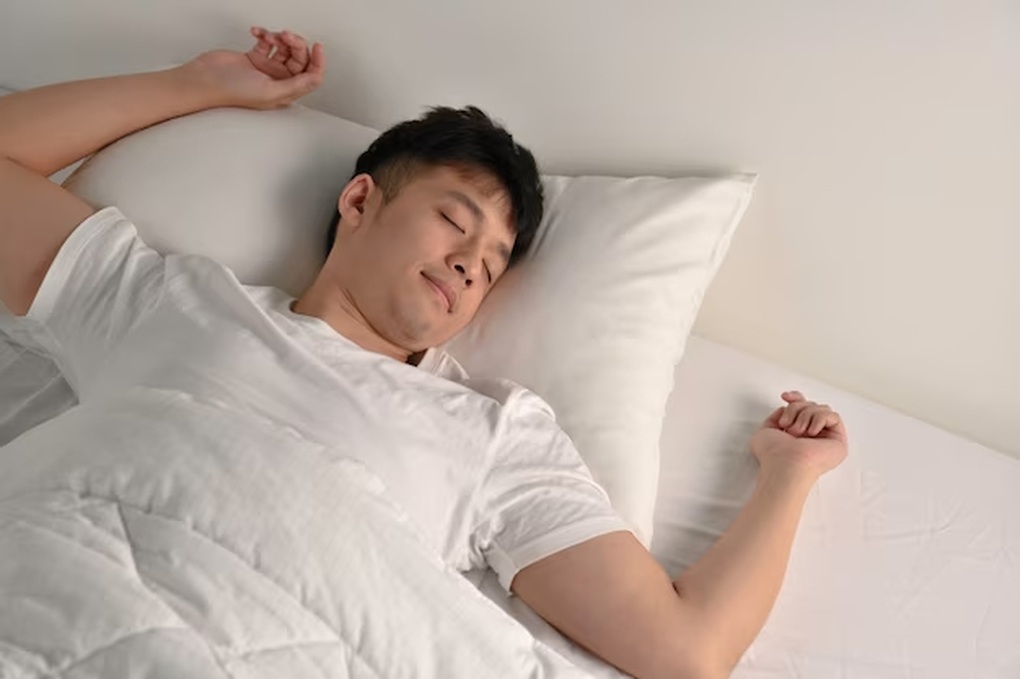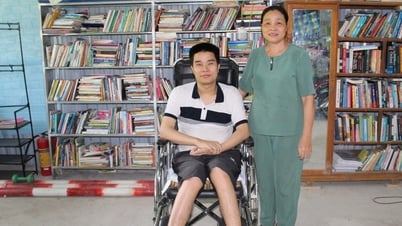Young man TVH (26 years old, working at a technology company in Ho Chi Minh City) came to the University of Medicine and Pharmacy Hospital - branch 3 for examination with neck and shoulder pain lasting nearly 3 months, accompanied by shoulder fatigue, dull pain spreading to the head, especially increasing when sitting for a long time or being stressed.
According to H., the pain initially appeared dull but gradually became more severe, affecting sleep, concentration and work performance. Although the young man treated himself at home with plasters, oil, and rest, the condition did not improve.
At the hospital, examination and X-ray results showed that his cervical spine had completely lost its physiological curvature (or straight neck syndrome). This condition causes the cervical vertebrae to be almost vertical instead of having the normal forward curvature.
In his medical history, H. added that he often sat at work for more than 8 hours a day with the computer screen placed below eye level, his neck bent forward, and his bad posture had lasted for many months. In addition, he also had the habit of sleeping with a high pillow and lying on his side with his neck bent.

Not only working in the wrong posture, sleeping in the wrong posture can also affect the health of the cervical spine (Illustration: Freepik).
After 3 weeks of treatment with traditional medicine and rehabilitation, the pain was significantly reduced. H. was instructed by the doctor on exercise positions and how to maintain them in daily activities and work to maintain the treatment results.
According to Dr. Ngo Thi Kim Oanh, Deputy Head of the Acupuncture - Health Care Department, University of Medicine and Pharmacy Hospital, Ho Chi Minh City - Branch 3, in healthy adults, the cervical spine has a slight forward curve - called physiological lordosis.
This curve helps to evenly distribute force from the head to the shoulders and upper body, absorb shock from daily activities (walking, standing, running...) and reduce the load on the discs and intervertebral joints.
When this curve is lost, the spine becomes “straight as a stick” – increasing pressure on the discs, joints, ligaments and muscles around the neck. Over time, this can lead to premature degeneration, cervical disc herniation, nerve root or spinal cord compression, causing symptoms such as pain, numbness in the arms, dizziness, and even muscle weakness.
Many cases, if not treated promptly, can progress severely, requiring surgical intervention or long-term rehabilitation.
According to Dr. Oanh, the loss of neck curve is no longer a disease of the elderly, but is spreading among the 20-35 age group. Most of the causes originate from incorrect posture when working and doing daily activities.
"Most patients under 30 years old who come to see a doctor for neck and shoulder pain have common characteristics such as sitting a lot, working continuously on the computer, using the phone for too long with their head bowed, little exercise, and no habit of exercising the neck - shoulder - upper back area," said Dr. Oanh.
To limit this condition, doctors recommend that young people should work with the screen at eye level, not bend their necks for long periods of time, and take breaks every 30-45 minutes to stretch their muscles. In addition, they should regularly practice stretching exercises to strengthen the neck-shoulder-back muscles; and choose a suitable sleeping pillow that is not too high or too hard.
Source: https://dantri.com.vn/suc-khoe/nam-nhan-vien-co-co-thang-nhu-cay-gay-vi-2-thoi-quen-sinh-hoat-quen-thuoc-20250520095054647.htm




























![[Photo] National Assembly Chairman attends the seminar "Building and operating an international financial center and recommendations for Vietnam"](https://vphoto.vietnam.vn/thumb/1200x675/vietnam/resource/IMAGE/2025/7/28/76393436936e457db31ec84433289f72)







































































Comment (0)